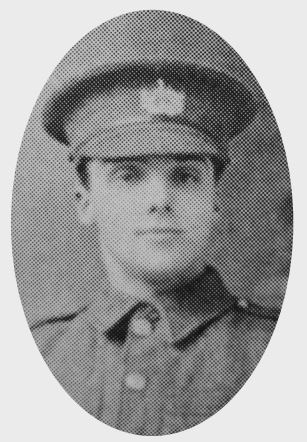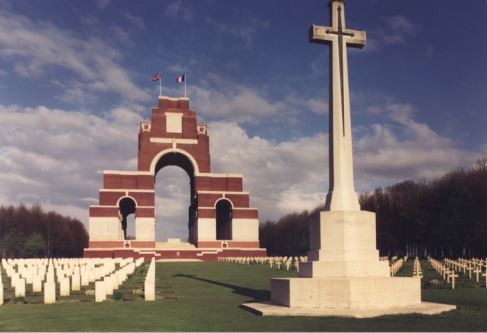1/5 Battalion Gloucestershire Regiment

Stanley George Wilson was born in Cheltenham but at an early age moved to Saffron Walden, Essex with his family, where he attended the Boys’ British School. He went on to take an apprenticeship with a local printer and upon its completion obtained a job as a journeyman printer with Norman Bros of Bennington Street, Cheltenham.
On 16 September 1916 he enlisted into the Gloucestershire Regiment and was posted to the 2/5 (Territorial) Battalion. His initial training was back in Essex and on 25 June 1915 he went to France as part of a re-enforcement draft for the 1/5 Battalion.
He spent time in the trenches at Ploegsteert Wood and at Hebuterne in the Somme sector. In March 1916 he returned to England with septic poisoning of the knee caused by rusty barbed wire. Amputation of the leg looked a distinct possibility but he eventually made a full recovery in Epsom Military Hospital, before returning to France in time for the Somme Offensive of July 1916.
On 20 July the Battalion went into action at the taking of Ovillers/La Boiselle. They managed to gain a portion of the communication trench leading to Sky Line Trench. The opposing sides were separated by a thick barrier of dead bodies thrown up by the Germans and during the next seven days there was continual fierce fighting for the possession of Sky Line Trench, mainly involving Mills bombs and rifle grenades.
At 11pm on the night of Friday the 21st the Battalion was involved in an attack to push the Germans back north east over the downs beyond Ovillers. Heavy machine gun fire rendered the attack unsuccessful and Stanley Wilson was never seen again.
In August 1916 his parents received a postcard saying that he had been involved in heavy fighting but he had come through without mishap. One week later came confirmation that he had been missing since 21 July. It was not until June 1917 that the War Office issued their official notice that he was presumed dead.
Private Stanley Wilson’s name appears on the Thiepval Memorial to the Missing, the Saffron Walden War Memorial and the Memorials in St Paul’s Church, Cheltenham, and Boys’ British School.

Thiepval Memorial
